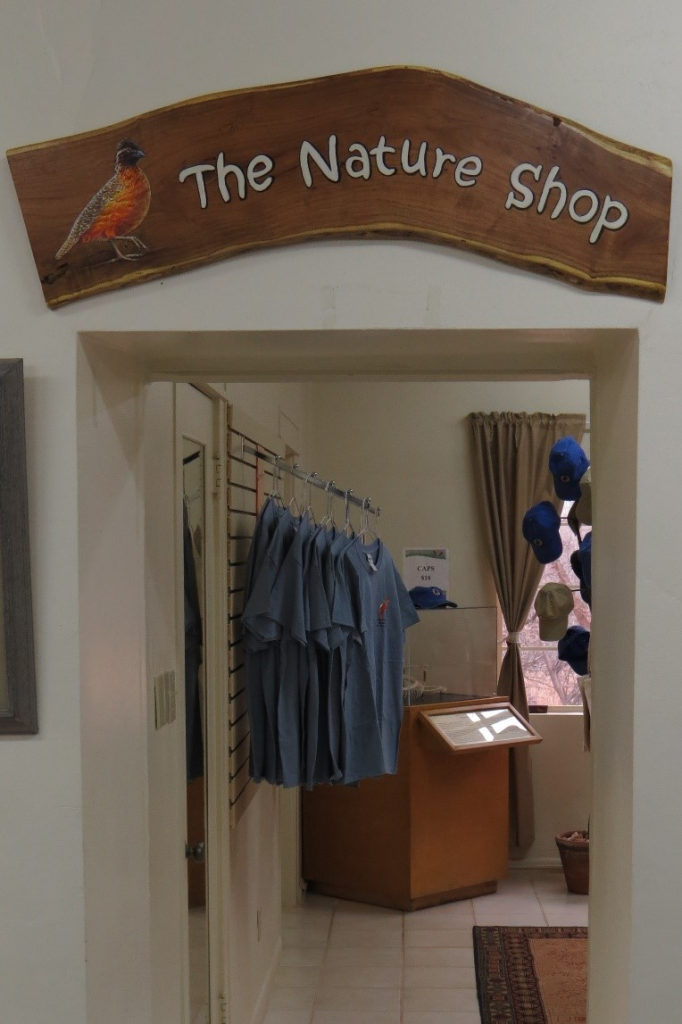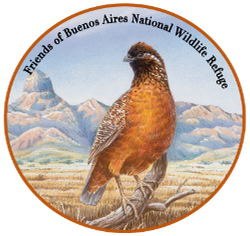
Friends Newsletter WINTER 2025
NEWS from the Friends of Buenos Aires
National Wildlife Refuge
Help us Keep the Visitors Center and Friend’s Nature Shop Open!

We need more volunteers to staff the Visitors Center at Buenos Aires National Wildlife Refuge. There are no refuge personnel to do this and fewer volunteers are currently available. The Visitors Center is no longer open seven days each week but is now open from Saturday thru Tuesday until March 31, 2025. After that date, the Center and the Friends Nature Shop may have to close if we cannot recruit more volunteers.
We can be flexible on the length of the work day and how many days you would need to volunteer. Please contact us if you want to help!
Future BANWR Nature Programs in Arivaca
All programs will start at 11am at the Dance Hall (17271 W 5th Street) in Arivaca.
On February 8, Emily Bishton will give a presentation on Sustainable Garden Design, showing people how their garden choices can benefit the health and beauty of your garden..

On March 8, Eamon Harrity from the Sky Island Alliance will give a program on wildlife and the border wall and what can be done to make this barrier easier for animals to traverse.
On April 12, Mary Scott and Emily Bishton will share how to create or enhance a garden to support butterflies, bees, beneficial insects and other pollinators throughout their life cycles.
On May 10th, join Megan Bethel from the Sky Island Alliance to learn about the cats of our sky islands, including bobcats, mountain lions, ocelots, and jaguars, and the struggles they face in this region.
Four Wheel Campers and Sierra Club Volunteers Arriving in March
The month of March will be busy with two groups of volunteers helping the refuge. The Four Wheel Campers will be cleaning the fire pits in the refuge’s campgrounds and also locating and removing an invasive plant called stinknet, which is originally from South Africa and is spreading in Arizona. It pushes out native vegetation and is also a wildfire hazard.

AZ Native Plant Society
Sierra Club at the Santa Margarita Ranch
The Sierra Club will be removing barbed wire fence on the Santa Margarita Ranch, which is adjacent to the refuge. Their goal is to open a wildlife corridor for wildlife. This ranch is cutting back on raising cattle and becoming more wildlife friendly. This is great help for refuge wildlife trying to migrate.
Nature Programs a Success!
Our November program drew a record 59 people. Mary Scott, a local fixture/celebrity in Arivaca, gave a fascinating presentation on the butterflies of our area.
In December, Vincent Pinto spoke about things with thorns and venom, and how to deal with them.
Our January program featured Tom Brown, the manager of Tucson Audubon’s Paton Center for Hummingbirds. He outlined what they have done so far to improve the facility for birds and birders and also detailed their future plans.
Wildlife on the Refuge – Coatis and Ringtails
Two southwestern specialties – ringtails and white-nosed coatis – are found at BANWR.
These members of the raccoon family are most commonly found in Brown Canyon but they do wander into the desert grasslands.
Coatis are long and skinny with a black mask, white snout, and indistinct striped tail. Ringtails are much smaller and have bushy striped tails. Coatis are tropical in distribution and reach the northern edge of their range in Arizona. Ringtails are found as far north as Utah and Colorado. Coatis are usually diurnal, and are more likely to be seen than ringtails, which are strictly nocturnal.
Both species are omnivorous with a varied diet ranging from fruit to lizards to small mammals. Ringtails are usually solitary but female and young coatis sometimes gather together in groups of 20 animals or more.


Coati (left) and Ringtail (right)
The Christmas Bird Count – Winter Survey of Refuge Birds
On a brisk Saturday, 22 birders scoured the refuge and adjacent environs to count the birds. Prior to 1900 this event was a competition by families in the eastern U.S. to see who could kill the most birds in one day. This horrible slaughter was countered by the National Audubon Society and the annual Christmas Bird Count began. Now hundreds of 15-mile radius count circles are established across the country, in which birders devote their time to count the most species and numbers that they can from dawn (or before) to dusk. The CBC has become the longest running avian database in the world, contributing valuable date on species trends nationwide and helping to guide conservation decisions.
The results of our count thus far show a total of 83 species. Of interest were 3 golden eagles (2 immature, 1 adult), 3 merlins, a green heron, 2 American pipits, and 3 black-chinned sparrows. We got both blue-gray and black-tailed gnatcatchers, and four kinds of towhees — not unusual for our habitat. Those were green-tailed, spotted, canyon, and Abert’s. Ongoing dryness and also cold on the count day limited bird numbers, but still, sparrow sightings were better than last year . . . 13 species and good numbers), including wintering flocks of lark buntings. We saw both red-winged and yellow-headed blackbirds. Especially notable were the multiple sightings of western bluebirds in assemblages totaling 100 birds.
Thanks to the Krakowskis who began owling before dawn so we can count four great horned and two western screech owls.

Perhaps the bird of the day was the crested caracara in area 11 west of the highway (see photo). This species does move to lower elevations in the winter, yet we don’t commonly see them on the CBC.
Thank you to the dedicated birders who donated their time in this valuable citizen science endeavor!
2024 Big Year for the Desert Fence Buster!
With less than 15 miles of interior fence remaining on the refuge and work slowing down, the Friend’s board of directors voted to donate their trunk of bolt cutters, loppers, saws and the wire winder to the Desert Fence Busters (DFB). Since DFB has monthly projects drawing 30-40 people each time, they could use our collection of tools.
DFB’s are a collaborative conservation project in Tucson’s west valley working to improve and enhance wildlife movement between natural areas by removing miles of deadly fencing barriers. This collection of organizations and volunteers banded together in 2021 to identify obsolete fences and remove them for the benefit of wildlife movement.
While not its own official non-profit, the Desert Fence Busters is a coalition of several dedicated groups working towards one goal: protecting and supporting wildlife by removing legacy barbed wire fencing from willing landowners.

